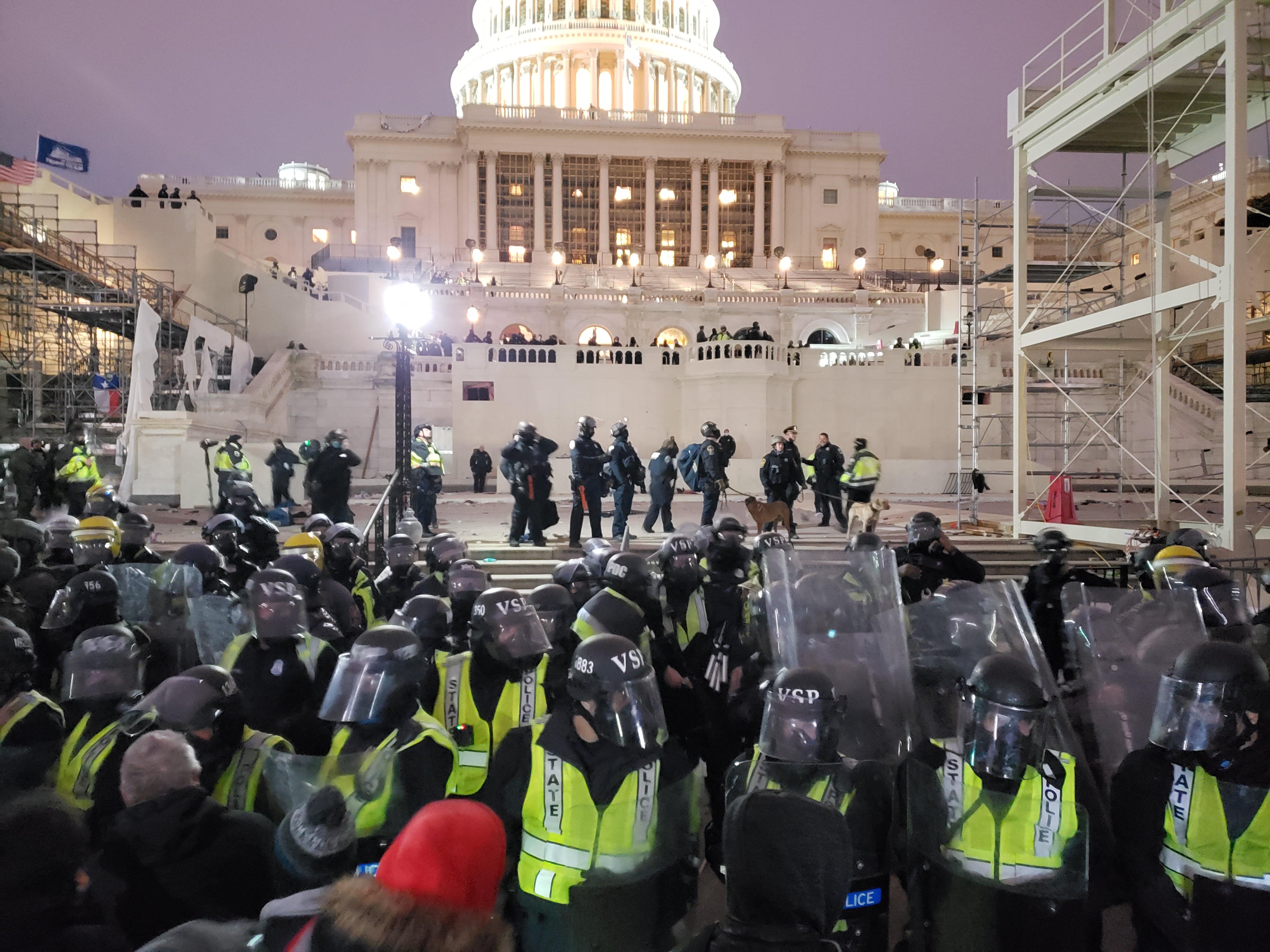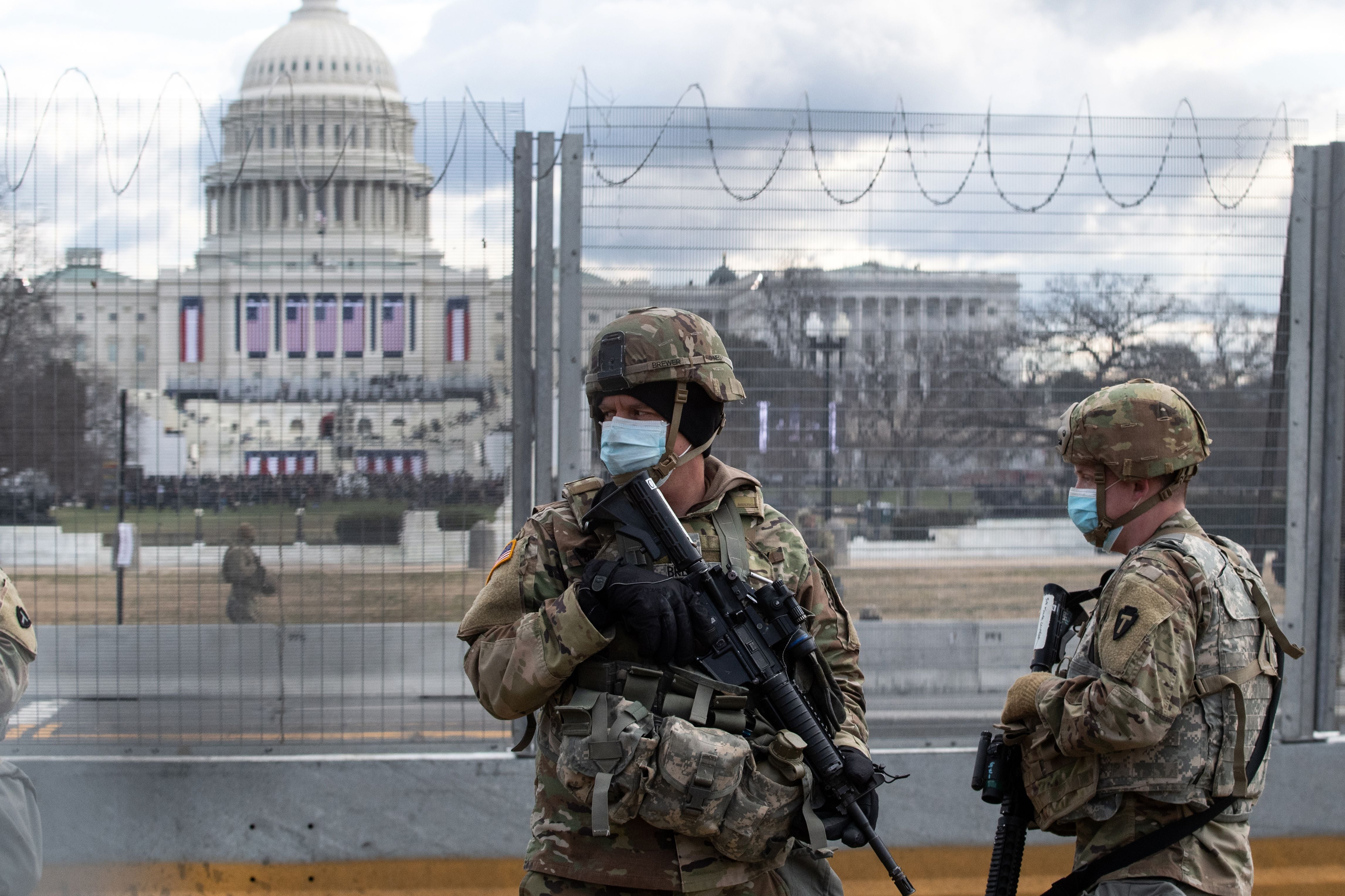Former Army Secretary Ryan McCarthy testified on Tuesday that Defense Department officials could have done little to prevent security failures surrounding the deadly riot at the U.S. Capitol building on Jan. 6 because other agencies failed to properly include them in their planning ahead of the attack.
“The Army cannot mobilize guardsmen or plan for contingencies without request,” McCarthy said in a prepared statement to House Appropriations Committee members in a closed-door briefing on the riots.
“The Justice Department was the lead agency for all of these events, the DoD was in a support role. We had no indication from the federal and local agencies that the 6th would be any different in size, composition or threat levels than what we witnessed during [previous] demonstrations.”
RELATED

Tuesday’s hearing, held out of public eye, also featured testimony from acting Chief of U.S. Capitol Police Yogananda Pittman and Acting House Sergeant at Arms Timothy Blodgett about mistakes made in the preparations for the massive protests outside the Capitol that day. Both of their predecessors resigned in the wake of the riots.
The Jan. 6 event followed a large-scale rally by supporters of President Donald Trump on the National Mall. Federal officials have estimated that more than 800 people rushed into the building in an attempt to stop lawmakers from certifying the results of the November presidential election, which Trump insisted was flawed.
Five people died in the Jan. 6 assault, including Capitol Hill police officer Brian Sicknick, a former New Jersey Air National Guard member who was struck in the head by a fire extinguisher thrown by someone in the crowd. Earlier this month, House lawmakers impeached Trump for the second time for his role in inciting the crowd.
In a prepared statement to the House lawmakers Tuesday, Blodgett said that the deadly attack was the result of a failure of security officials to properly prepare for the violent crowd.
“Whether it was insufficient or conflicting intelligence, lacking ability to translate that intelligence into action, insufficient preparation or an inadequate ability to mobilize partner agencies for immediate assistance, a series of events, once thought unfathomable, unfolded allowing our most sacred halls to be breached,” he said.
Pittman said two days before the rally, former Capitol Police Chief Steven Sund requested that the Capitol Police Board declare a state of emergency and request additional National Guard support as insurance against the expected crowds. The board denied that request.
McCarthy said Guardsmen were requested to help provide support at local traffic stops and metro stations, but not to provide large-scale security operations.
In response to questions about whether defense officials should have better identified the possible threat against the Capitol and Congress, McCarthy said that “it is not appropriate for the Army to conduct contingency planning to secure the Capitol without a request from a federal agency.”
He said that by the time a formal request arrived for the Guard to assist with crowd control, rioters were already entering the building. Army officials have denied accusations that requests from Capitol Hill and Washington, D.C. officials were slowed or denied because of political interference.
“We must organize and communicate better to avoid events like this in the future,” McCarthy told lawmakers. “Ultimately, we must make these decisions in times of peace and not wait for chaos to be the catalyst for change.”
Committee officials said the briefing was not held publicly because of the “sensitive nature of the information discussed.” Afterwards, Rep. Rosa DeLauro, D-Conn., called the attack “one of the darkest days in American history.”
RELATED

“The law enforcement agencies tasked with protecting the Capitol did not act on [existing] intelligence or adequately prepare for the looming threat,” she said in a statement. “There were also profoundly troubling lapses in coordination, particularly as it relates to the deployment of the National Guard, which prevented a speedy response once the threat materialized.
“To comprehensively protect the seat of government, meaningful reforms are critical.”
Congressional leaders and Pentagon officials alike have promised a full review of all issues related to Guard response to the attack, in an effort to prevent similar problems in the future.
Nearly 26,000 Guard troops were activated in the days following the riot, to provide security for congressional operations and the presidential inauguration on Jan. 20.
National Guard officials say thousands more troops will remain in D.C. until mid-March, with DCNG troops on orders until March 31.
“As we continue to work to meet the final post-inauguration requirements, the National Guard has been requested to continue supporting federal law enforcement agencies with 7,000 members and will draw down to 5,000 through mid-March,” National Guard Bureau spokesman Wayne Hall told Military Times. “We are providing assistance such as security, communications, medical evacuation, logistics, and safety support to state, district and federal agencies.”
Military Times managing editor Howard Altman contributed to this report.
Leo covers Congress, Veterans Affairs and the White House for Military Times. He has covered Washington, D.C. since 2004, focusing on military personnel and veterans policies. His work has earned numerous honors, including a 2009 Polk award, a 2010 National Headliner Award, the IAVA Leadership in Journalism award and the VFW News Media award.



